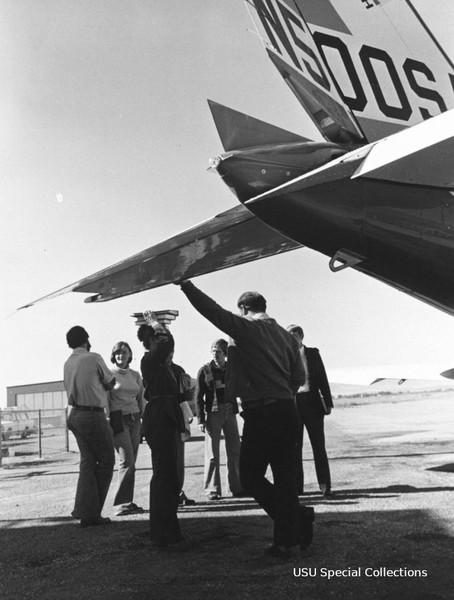Dublin Core
Title
Description
For most of the twentieth century, university campuses were rarely located in remote areas. This meant that rural residents faced barriers accessing higher education. To overcome this challenge, some Utah colleges used air travel to reach students where they lived.
As the state’s agricultural college, reaching rural students has long been part of Utah State University’s mission. Early efforts included dispatching teachers via railroad, but new possibilities emerged when air travel became more common after World War II. In 1967, Utah State began flying its faculty to the Uinta Basin, where they taught out of a one-room storefront in Roosevelt. Later, as more offerings became available in Vernal, students attended class in county buildings and public school auditoriums. Utah State's Fly-Down Program was very successful and continued to expand. At the program's peak in the 1970s, “flying professors” were in the air six times a week to Price, Moab, Tooele, and Roosevelt.
Utah State was not the only school to fly its professors to rural areas. In the 1970s, a teaching instructor for Southern Utah State College – who happened to be a pilot – flew around the state, even going to Nevada and Arizona, to supervise his teachers-in-training. The College of Eastern Utah, headquartered in Price, also flew teachers from its San Juan Center for Higher Education in Blanding out to Navajo Mountain on the Arizona border. Flying made the journey substantially quicker and easier than driving miles of roads over rocky terrain.
While long distances and circuitous routes made driving impractical, flying presented its own challenges. Professors who flew in the tiny planes recounted frightening experiences of icy runways and buffeting high winds. Fortunately, Utah State’s Fly-Down Program had no major incidents. Even with the occasional scare, most professors still wanted to reach remote students. The program lasted until 1996.
Utah State has continued to bring educational opportunities to residents of rural Utah. Over the decades, the university incorporated junior colleges into its system. Now with campuses, offices, and agricultural stations all overthe state, the university has many ways to serve rural students. And, of course, these days there is a proliferation of online courses. Distance learning has certainly come a long way.
Creator
Source
________________
See Kristen Munson, “Look Back: Planes, Trains, and Wi-Fi,” Utah State Magazine, Aug. 24, 2022; Robert Parson, “University Extension,” Encyclopedic History of Utah State University; Van Potter, “Teachers fly to remote areas,” San Juan Record, July 12, 1979, page 4; “SUSC conducts successful Intern program in education,” Iron County Record, January 27, 1972; “SUSC Professor uses airplane to provide extra help for teacher trainees of area,” Iron County Record, April 23, 1970.

